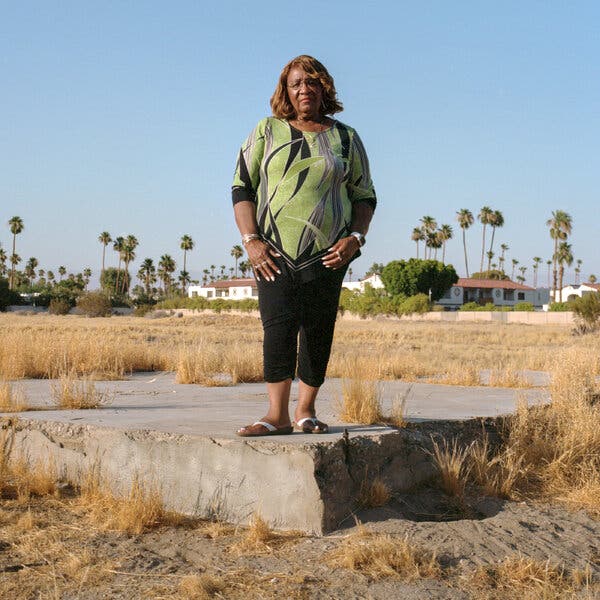Black and Latino families whose neighborhood was razed in the 1960s are seeking compensation from the city.

Palm Springs used to have a neighborhood called Section 14, where many of the desert resort’s gardeners, janitors, construction workers and housekeepers, most of them Black or Latino, lived with their families.
Section 14 was a place for the working poor, a far cry from the glamorous Palm Springs that catered to stars like Frank Sinatra, Marilyn Monroe and Lucille Ball. Hemmed in by discriminatory housing policies, residents of color built a community of modest houses, trailers and small businesses on leased land with few services and mostly unpaved streets.
And then it was destroyed.
Section 14 was razed in the 1960s to make room for commercial development, with little notice or recourse for the displaced residents. Now they and their descendants are asking for compensation for their losses, as well as damages for racial trauma.
But it’s a complicated situation, as my colleague Audra D. S. Burch reported this week.
The city of Palm Springs has apologized for its role in the evictions and said it was committed to pursuing a program of reparations, but negotiations stalled. Some current residents of Palm Springs say they oppose any kind of financial settlement without an independent assessment of what happened, saying the city has been unfairly blamed for the destruction of Section 14. And the land belongs to a Native American tribe, the Agua Caliente Band of Cahuilla Indians, which has not said publicly where it stands on the evictions or the question of compensation.
“So much about this is complex — it’s at the intersection of race, wealth and power,” the Rev. Daniel Kline of the Church of St. Paul in the Desert told Audra.
Audra’s full article about the quest for reparations in Palm Springs illustrates how difficult it can be to turn symbolic support for reparations into real action.

